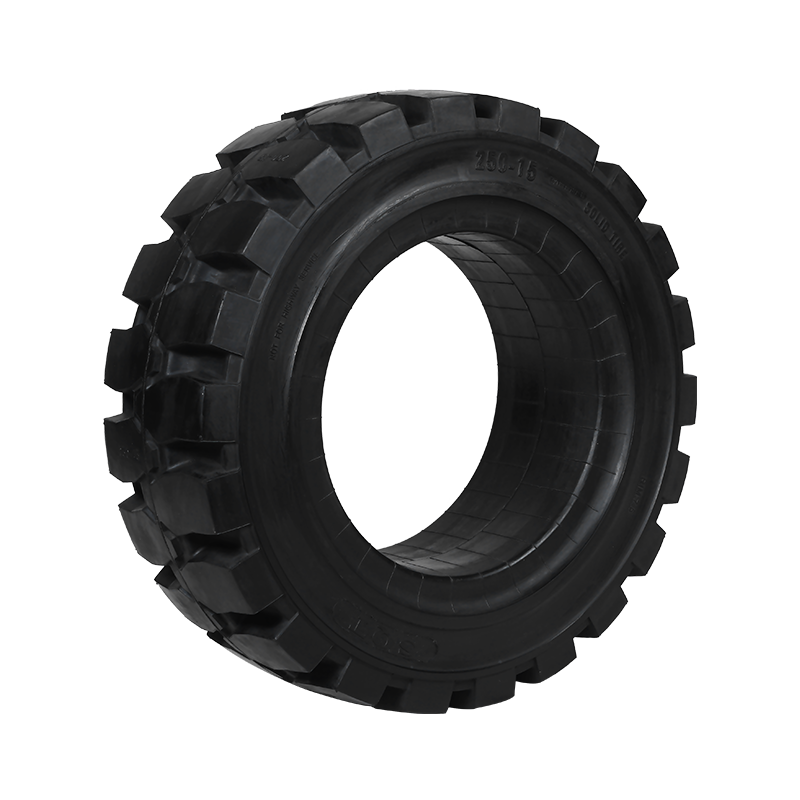How to Optimize Tire Structure in Aerial Work Platform Tires to Reduce Heat Accumulation and Improve Service Life
In the design of aerial work platform tires, reducing heat accumulation within the tire structure is critical for extending tire life. Heat buildup primarily results from internal energy losses (hysteresis losses) in the materials and stress concentration within the tire structure. The following are key methods to optimize the tire structure:
Optimizing Tire Materials
Low Hysteresis Loss Materials:
Use low hysteresis rubber composites (such as specialized polymers or added silicone rubber) to reduce internal friction.
Add silica fillers or nanomaterials to the tread rubber to improve heat dissipation and reduce hysteresis losses.
Layered Material Selection:
Use materials with better thermal conductivity (e.g., graphite-infused rubber) in different internal layers to increase heat transfer rate.
Enhancing Tire Heat Dissipation Design
Optimize Sidewall and Tread Thickness:
Reduce the thickness of the sidewall rubber, lowering material thickness while ensuring strength to reduce heat generated by friction.
Incorporate special heat-dissipating grooves or heat conduction strips in the tread design to accelerate heat dissipation.
Ventilation Structure Design:
Design microholes or ventilation channels in the sidewall to help expel internal heat, suitable for platforms operating in low-speed conditions.
Improving Internal Layer Structure
Reduce Stress Concentration Points:
Adjust the arrangement angle of the belt layers (or steel layers) to ensure more even stress distribution under load, preventing localized high-temperature spots.
Optimize the number and strength of steel belt layers to ensure structural stability under high loads.
Lightweight Structural Design:
Use high-strength, lightweight materials (e.g., Kevlar fibers) to replace some traditional steel wires, reducing tire weight and thereby minimizing heat generated by rolling friction.

Tire Structure Thermal Optimization
Multi-layer Zoned Design:
Design different hardness and thicknesses of rubber for the tread, sidewall, and tire body to reduce heat accumulation in certain areas.
Add heat-dissipating coatings or heat conduction layers inside the tire to quickly transfer internal heat to the outside.
Local Reinforcement Design:
Use high thermal conductivity materials in the shoulder and sidewall areas to enhance heat dissipation in these heat-prone regions.
Rolling Resistance Optimization
Design an Appropriate Tread Pattern:
Reduce rolling resistance by refining the tread pattern (e.g., smaller spacing, shallow grooves), which helps prevent heat accumulation.
Avoid excessively thick or large block tread designs that could lead to heat buildup.
Optimize Ground Contact Shape:
Adjust the pressure distribution of the ground contact area, ensuring a more uniform contact area when the tire rolls, thus reducing local overheating.
Application of Heat Dissipation Coatings
Internal Coating:
Apply high thermal conductivity materials such as aluminum-based or ceramic coatings on the inside of the tire to enhance heat transfer properties.
External Coating:
Use high-temperature resistant coatings on the tread and sidewall, which also reflect heat radiation.
Simulation and Testing Optimization
Finite Element Thermal Analysis (FEA):
Use finite element simulation technology to model heat distribution under different operating conditions and optimize the tire structure.
Adjust the arrangement of the belt layers, steel layers, and rubber materials based on simulation results.
Real-world Heat Decay Testing:
Test the tire’s heat accumulation under actual working conditions on a simulated platform, and use the results to further optimize the design.
Other Methods
Tire Pressure Management:
Optimize the designed tire pressure range so that the tire maintains low rolling resistance even under maximum load.
Dynamic Cooling Technology:
Research internal dynamic cooling systems, such as low-pressure air circulation or cooling agents, to enhance active heat dissipation capabilities.
CONTACT US
-

Email: SMT001@saimeite-tyre.com
-

Phone: +86-18451337018No. 1, Renmin South Road, Yandu District, Yancheng City, Jiangsu Province, China

 English
English 한국어
한국어 Français
Français Español
Español











